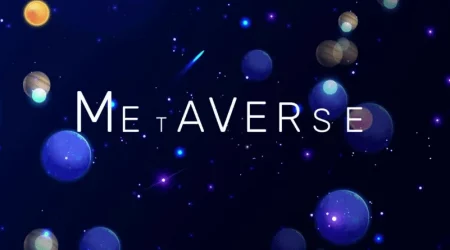Why Is There So Much Hate Towards Metaverse?
Table of Contents
Why Hate Towards the Metaverse?
Metaverse is a hybrid of virtual, augmented, and extended reality. As a result, it allows users to be active participants in the world they are immersed in. For the creators, it allows them to make more money from the users and has the potential to control the Internet. Yet, it’s not without controversy. The community built up around Metaverse has been divided and polarized over the issue.
The Metaverse is not the next big thing. It is not even the Next Big Game. It is an unproven concept with little evidence to back it up. However, it is an exciting concept that is getting a lot of buzz. Here are some reasons why. You will probably be surprised to learn that people are enjoying this game. You can play it as a free-to-play community member and have access to all of its services and content.
Harassment Of Marginalized People
One of the significant issues in the Metaverse is the harassment of marginalized people. The practice is a well-documented, sadly predictable problem. It occurs in all aspects of online life, but in the Metaverse, it is particularly pronounced among women and people of color. This article will discuss how this type of harassment affects women and people of color. First, let’s examine why this behavior is so typical.
Despite the growing numbers of intersectionally-diverse women in the emerging technology sector, there is still an underrepresentation of women in leadership positions. Moreover, this phenomenon is rooted in white, cishet, non-disabled men dominating the Platform Age. Hence, it is imperative to ensure that the Metaverse reflects the reality of marginalized groups.
As virtual social reality (VR) technologies become more immersive, it is no longer surprising to see incidents of harassment on these platforms. Harassment has already occurred on other platforms. Minority Media, the makers of virtual reality games like Yo and Papo, has begun investigating whether VR will be a fertile ground for this kind of harassment. The National Science Foundation funds this research.
Future Of Virtual Reality
The entertainment industry is the apparent use of VR, but other industries will also benefit from this technology. Businesses like IKEA are already using VR in their showrooms to help potential buyers make the right choice. Construction companies could use it to train workers and help them understand how a construction project might come together. Other industries that will benefit from VR include education, real estate, and architecture. Thousands of VR solutions are in development. As the technology grows and improves, its impact will only increase.
The application of virtual reality in entertainment began after World War II. Morton Heilig, a pioneer in virtual reality, wrote an essay entitled “The Cinema of the Future” in 1955. Heilig envisioned an immersive cinematic experience that stimulated the five senses and patented his Sensorama Simulator in 1962.
Read More: Can We Have a Good Metaverse Experience Without VR?
Antisocial Behavior On VRChat
A recent study by the Centre for Countering Digital Hate tracked 12 hours of VR Chat recordings. One person engaged in antisocial behavior every seven minutes in the average chat. Such behavior is a significant cause for concern as it raises important questions about the safety of virtual worlds. It is particularly concerning given that the metaverse immerses its users in a virtual environment that is entirely digital. Unwanted digital touches and effects can have a real-life impact, making the negative impact on the experience more pronounced.
Luckily, the self-moderation tools available in VRChat and AltspaceVR are robust and easy to use. These tools include the personal space bubble, mute, and block, but users must learn to use them. Most VR platforms are still in retrofit mode, but some steps can be taken to prevent antisocial behavior. For example, VRChat and Oculus both have systems that allow users to put up a personal boundary around their avatars. While the personal boundary does help curb some abuse, it does not prevent other forms of harassment.
It Should Have A “Safe Zone”
A recent BuzzFeed investigation found that the Metaverse does not have parental controls. While the company claims not to tolerate sexual harassment or hate speech, it relies heavily on mutes and user blocks to prevent harmful behavior. This, in turn, leads to inconsistent behavior by Meta moderators. A “Safe Zone” would have a more immediate effect, reducing the chances of inappropriate behavior and potentially avoiding harassment altogether.
Horizon Worlds reportedly has a system for preventing unwanted interactions. The technology enables users to create their worlds and display custom content. The game’s immersive nature allows players to create their own “worlds” and use them as a backdrop for other players. Patel’s blog post went viral, and other women have since documented similar experiences in the Metaverse. Whether the metaverse has a “Safe Zone” or not, safety should be a top priority.
The Center for Countering Digital Hate has studied the countless incidents of misinformation and hate directed at the Metaverse. It has been reported that an avatar experiences an inappropriate act online every seven minutes. Such acts include racism, misogyny, and sexual content. The Center recorded over 100 instances, sharing many with NBC News. Because of this, the Center is now working to increase safety on the Metaverse, including a requirement that avatars stand at least four feet away from one another.







Leave a Reply